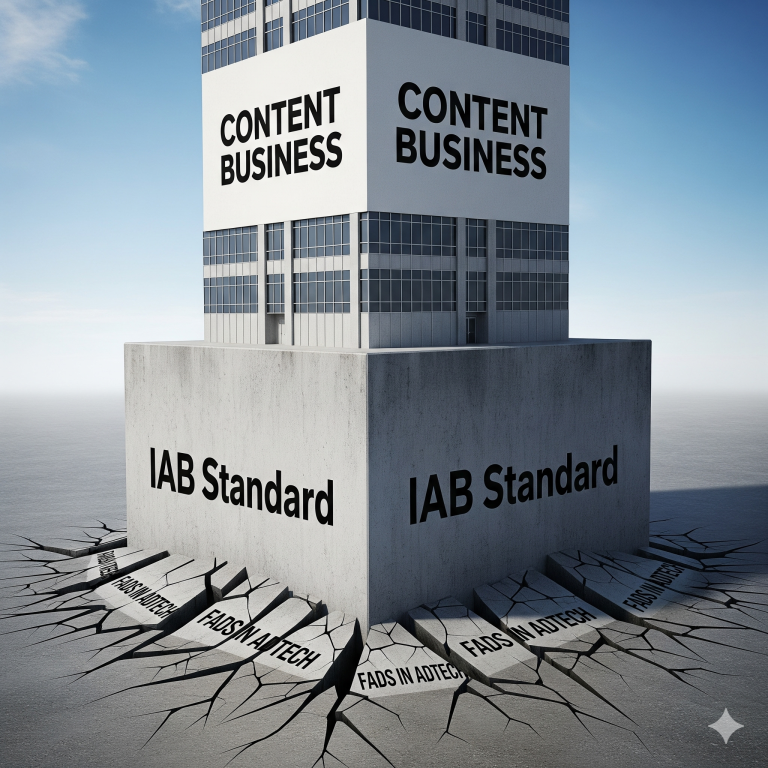Demystifying Google Ad Manager’s Pricing Models
Discover the different pricing models for advertising in Google Ad Manager and understand how they work to optimize …
Direct Sales Google Ad Manager Optimizing Revenue Pricing Model
February 26th, 2025
Discover the different pricing models for advertising in Google Ad Manager and understand how they work to optimize your campaigns.
Understanding Google Ad Manager’s Role in Digital Advertising
Google Ad Manager plays a crucial role in the world of digital advertising. It is a powerful platform that allows publishers to manage their ad inventory and maximize their revenue. With Google Ad Manager, publishers can easily sell and deliver ads across various channels, including websites, mobile apps, and video platforms.
One of the key functions of Google Ad Manager is to connect publishers with advertisers. It acts as a middleman, facilitating the buying and selling of ad space. Advertisers can reach their target audience through Google Ad Manager by bidding for ad placements on publishers’ websites or they can interact with a Salesperson and sign an IO for a custom campaign, which will get targeted inside of Google Ad Manager. This ensures that ads are displayed to the right people, at the right time, and in the right context.
In addition to connecting publishers and advertisers, Google Ad Manager also provides valuable insights and reporting tools. Publishers can track the performance of their ad campaigns, analyze audience data, and make data-driven decisions to optimize their advertising strategies. Overall, Google Ad Manager is an essential tool for publishers looking to monetize their digital assets and advertisers aiming to reach their target audience effectively.
The Importance of Pricing Models in Google Ad Manager
Pricing models play a crucial role in Google Ad Manager as they determine how publishers generate revenue and how advertisers pay for their ad placements. Choosing the right pricing model is essential for both publishers and advertisers to ensure a fair and effective advertising ecosystem.
Google Ad Manager offers various pricing models, each with its own advantages and use cases. Understanding these pricing models is key to optimizing your advertising campaigns and achieving your desired outcomes. Let’s explore some of the most common pricing models in Google Ad Manager and how they can benefit your advertising strategy.
Cost Per Thousand Impressions (CPM): Maximizing Reach and Brand Awareness
Cost Per Thousand Impressions (CPM) is a pricing model where advertisers pay for every one thousand ad impressions served. This model is ideal for advertisers looking to maximize their reach and brand awareness. With CPM, advertisers can ensure their ads are seen by a large number of users, regardless of whether they click on the ads or not.
CPM is particularly beneficial for brand awareness campaigns, where the primary goal is to expose the target audience to the brand and its messaging. By paying for impressions rather than clicks or conversions, advertisers can increase their brand visibility and create a lasting impression on their target audience.
To make the most out of CPM pricing model, it’s important that advertsiers optimize their ad placements and targeting options. By customizing your offering and combining the right mix of property and targeting criteria – you can ensure your advertisers are getting maximum value from CPM campaigns and getting their brand seen by the right people.
Cost Per Day (CPD): Handling Sponsorship more effectively
Cost Per Day (CPD) is a pricing model that allows advertisers to sponsor ad placements for a specific duration, whether that be a day, week month or year. This model is commonly used for special promotions, events, exclusive sponsorships – or in ad locations where impression counts are low but intrinsic visitor value is high. With CPD, advertisers can secure a specific ad placement for a fixed period, ensuring maximum visibility and exclusivity.
CPD is particularly effective when an advertiser wants to be seen as the dominant brand for a specific part of your site. This could be Geographically, based off of high value pages – or a desire to be featured as a “partner” of something tangible on the site. This pricing model is often used for high-profile campaigns or when advertisers want to stand out from their competitors, but also can be used effectively for local brands trying to reach a very specific part of your audience or topic on your platform.
To leverage the power of CPD, it is important to identify high brand value sections, topics or geographic regions on your website. Whether it is a Beer company that wants to be known in a specific city, a BBQ company that wants to be associated with content around specific baseball teams on your site or an Advertiser that wants to be associated with News – you know your audience best and are the one to set out what is available for Sponsorship.
Cost Per Click (CPC): Driving Traffic and Measuring Performance
Cost Per Click (CPC) is a pricing model where advertisers pay for each click their ads receive. This model is ideal for advertisers looking to drive traffic to their websites, increase user engagement, and measure the performance of their ad campaigns. With CPC, advertisers only pay when users interact with their ads by clicking on them.
CPC is particularly useful for performance-based campaigns, such as lead generation or e-commerce. By paying for clicks, advertisers can directly measure the effectiveness of their ads in driving user actions. This pricing model allows advertisers to optimize their campaigns based on click-through rates, conversion rates, and other performance metrics.
The main issue with CPC-based advertising is click fraud. Advertisers can be very sensitive to the type of clicks that come through to their site, and without sophisticated mechanisms to deter Visitors to the site from randomly clicking ads – this type of a pricing model can be difficult to offer as a publisher, as you must take accountability towards measurement being accurate.
Finally, CPC advertising is only effective with advertising creative that promotes a click. If the advertiser wishes to pay CPC, but they submit creatives that are much more focused on Brand Awareness – they may be upset that there are not many clicks, or the publisher will get a very small amount of revenue when the Advertiser got a large amount of Brand Awareness. This is where the CPD or CPM models are the preferred way of most publishers to price out their advertising spots.
Cost Per Acquisition (CPA): Achieving Conversions and ROI
Cost Per Acquisition (CPA) is a pricing model where advertisers only pay when a desired action, such as a purchase or a sign-up, is completed. This model is ideal for advertisers looking to achieve specific conversions and maximize their return on investment. With CPA, advertisers can focus on the outcomes that matter most to their business.
CPA is particularly effective for campaigns with clear conversion goals, such as e-commerce sales, lead generation, or app downloads. By paying for actual conversions, advertisers can measure the direct impact of their ads on their business objectives. This pricing model allows advertisers to optimize their campaigns based on conversion rates, cost per conversion, and other key performance indicators.
Setting up CPA advertising as a publisher is much more complicated, and requires Google Ad Manager 360 to do so. If you are to set up these types of campaigns, the Advertiser and your AdOps team must set up the conversion tracking code on the Advertiser’s website in order for the model to work. This is not recommended for smaller publishers, and is a more complicated way of pricing advertising.
To succeed with CPA campaigns, it’s important to set realistic conversion goals and ensure the advertiser optimizes their targeting and ad creatives accordingly. Once again, if an Advertiser simply provides creatives that promote Brand Awareness, a publisher can give a lot of advertising space away while being paid a small amount for actual purchases made.
Which Pricing Model should I use for the campaigns I want to sell?
Choosing the right pricing model for your campaigns depends on your specific goals with your advertising. In general, Publishers tend to exclusively use CPM and CPD pricing models. This is absolutely the most effective way to sell advertising space, and not to be on the hook for the performance of the Advertising creatives you are given. It is the Advertiser’s responsibility to get people to do what they need, and it is only your responsibility as a publisher to provide them the space to get that message across. They pay for the space used, you do not get paid less if the ads don’t work.
Publishers may have differing areas of expertise – for instance, product reviews that are designed to be last-click information gathering right before purchase can make drastically higher revenues from a small fraction of their audience than a CPM model if their reviews actually convert to sales. In this case, exploring CPA or CPC can be very profitable because the impressions of the user with high purchase intent would generate such low revenue in a CPM model.
It’s also worth considering the nature of your ad inventory and the preferences of your potential advertisers. Some advertisers may have specific pricing model requirements or preferences, so it’s important to align your offerings with their needs. Additionally, you can experiment with different pricing models and analyze the performance data to determine which model works best for your campaigns and generates the highest revenue.
Ultimately, the right pricing model should align with your business goals, target audience, and overall advertising strategy. By carefully considering these factors and monitoring the performance of your campaigns, you can make informed decisions and maximize the effectiveness of your advertising offering.
As always, if you have questions – reach out to [email protected] and we’re happy to help you choose what is the best fit for your site!
Related Blogs

What “IAB Standard Banners” Look Like on a Modern Website
August 27th, 2025 by Doug Bishop
In the evolving landscape of digital publishing, display advertising remains a vital revenue stream. However, the way ads are presented and filled has transformed over the past decade. It is essential for publishers to grasp the significance of iab standard banners, recognize their presence on websites, and understand their impact on monthly earnings. The Basics: […]
Read More
Google Search Console Tutorial: Checking for CWV Errors
August 26th, 2025 by Doug Bishop
As a website owner, keeping an eye on your site’s performance is crucial for both user experience and search engine optimization (SEO). Google’s Core Web Vitals (CWV) are an important set of metrics that measure real-world user experience for loading performance, interactivity, and visual stability. CWV errors can negatively impact your search rankings, so it’s […]
Read More
How Core Web Vitals Became Central to Search Rankings
August 25th, 2025 by Doug Bishop
Google’s Helpful Content Update in 2023 first exposed a painful truth for publishers: visitor experience metrics are now revenue metrics. In 2025, that reality has hardened. Core Web Vitals — Cumulative Layout Shift (CLS), Interaction to Next Paint (INP), and Largest Contentful Paint (LCP) — have become the silent killers of search visibility, draining traffic […]
Read More